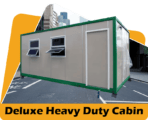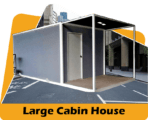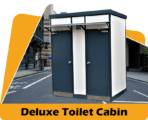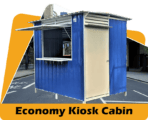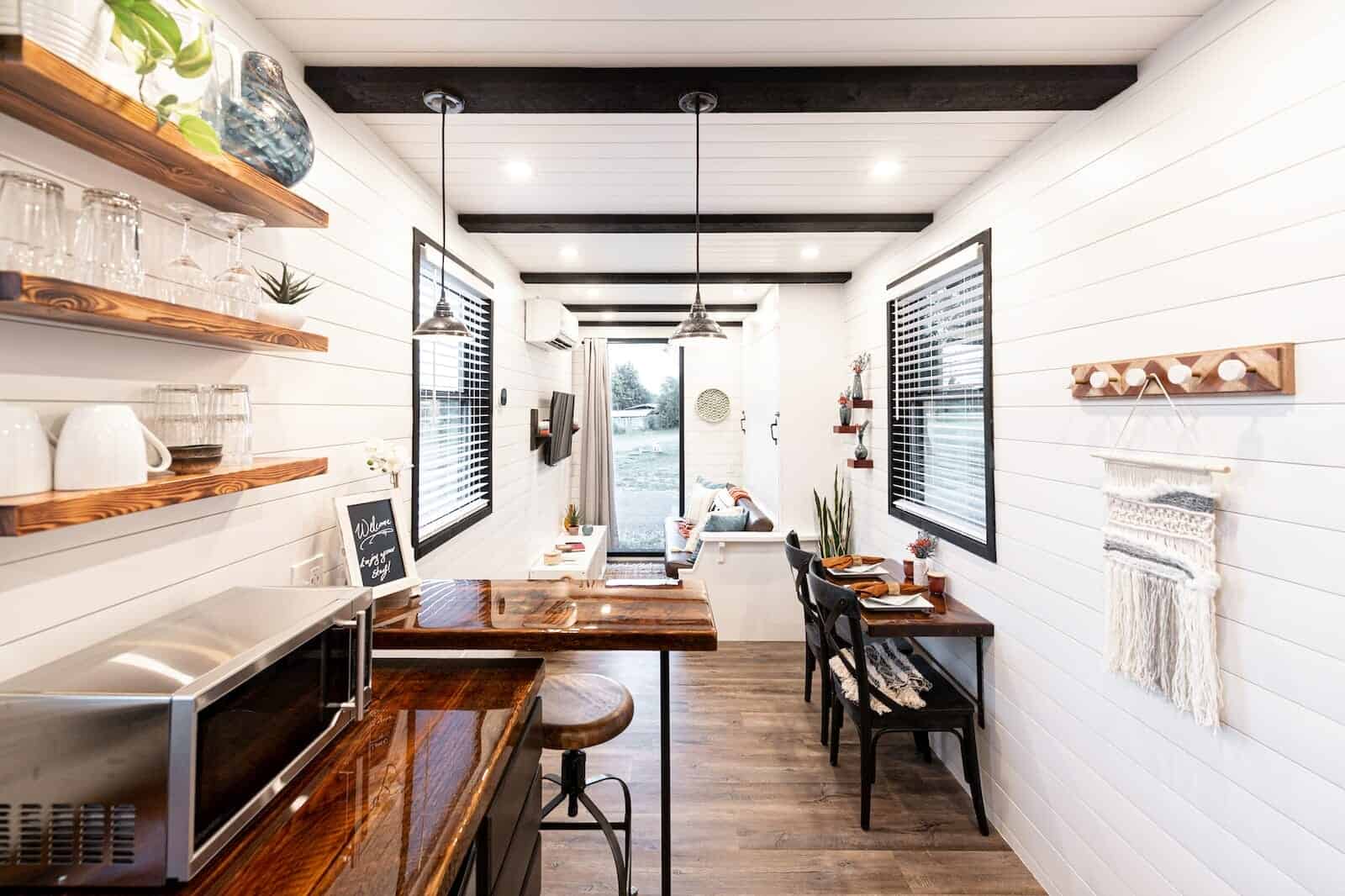
Pros and Cons of Tiny House Living: Is It the Right Choice for You?
Table of Contents
- Introduction
- Pros of Tiny House Living
- 2.1 Affordability
- 2.2 Mobility and Flexibility
- 2.3 Environmental Friendliness
- 2.4 Minimalistic Lifestyle
- 2.5 Lower Utility Costs
- 2.6 Easier Maintenance
- 2.7 Reduced Clutter
- 2.8 Creative Use of Space
- 2.9 Opportunity for Customization
- 2.10 Closer Connection with Nature
- 2.11 Debt-Free Living
- 2.12 Increased Financial Freedom
- 2.13 Simplified Cleaning
- 2.14 Stronger Sense of Community
- 2.15 Reduced Carbon Footprint
- 2.16 Independence and Self-Sufficiency
- 2.17 Lower Environmental Impact
- 2.18 Flexibility in Location
- 2.19 Enhanced Outdoor Living
- 2.20 Efficient Use of Resources
- 2.21 Potential for Off-Grid Living
- 2.22 Encourages a Minimalist Mindset
- 2.23 Lower Property Taxes
- Cons of Tiny House Living
- 3.1 Limited Space
- 3.2 Lack of Privacy
- 3.3 Zoning and Legal Issues
- 3.4 Difficulty in Reselling
- 3.5 Challenges with Financing
- 3.6 Limited Storage
- 3.7 Need for Minimal Possessions
- 3.8 Adapting to a Smaller Lifestyle
- 3.9 Limited Hosting and Entertaining Options
- 3.10 Building and Maintenance Costs
- 3.11 Emotional and Psychological Adjustments
- 3.12 Accessibility Concerns
- 3.13 Off-Grid Living Challenges
- 3.14 Seasonal Limitations
- 3.15 Social Stigma
- Is Tiny House Living Right for You?
- 4.1 Consider Your Lifestyle and Needs
- 4.2 Assess Your Space Requirements
- 4.3 Evaluate Your Financial Situation
- 4.4 Research Zoning and Legal Requirements
- 4.5 Examine the Environmental Impact
- 4.6 Reflect on Your Long-Term Goals
- Conclusion
- FAQs
- FAQ 1: Can I build a tiny house on any piece of land?
- FAQ 2: How much does it cost to build a tiny house?
- FAQ 3: Is living in a tiny house suitable for families with children?
- FAQ 4: Are tiny houses legal in all states?
- FAQ 5: How do tiny houses impact the environment?
- FAQ 6: Can I build a tiny house without any construction experience?
- FAQ 7: Are there financing options available for tiny house projects?
- FAQ 8: Can I live in a tiny house off-grid?
- FAQ 9: How do I handle waste management in a tiny house?
- FAQ 10: What are some common misconceptions about tiny house living?
1. Introduction
Are you tired of the hustle and bustle of city life? Do you dream of a simpler, more minimalist lifestyle? If so, you might have come across the concept of tiny house living. Tiny houses have gained significant popularity in recent years, offering an alternative way of living that focuses on simplicity, affordability, and sustainability. However, before you make the decision to downsize and embrace the tiny house movement, it’s essential to consider both the pros and cons associated with this lifestyle. In this article, we will explore the advantages and disadvantages of tiny house living to help you determine if it’s the right choice for you.
2. Pros of Tiny House Living
2.1 Affordability
One of the most significant advantages of living in a tiny house is its affordability. Tiny houses typically cost significantly less to build or purchase compared to traditional houses. They require fewer materials, use less energy, and have lower property tax and insurance costs.
2.2 Mobility and Flexibility
Tiny houses offer the advantage of mobility and flexibility. Since they are smaller and more lightweight, they can be easily transported to different locations, allowing you to change your scenery or move closer to your desired destinations.
2.3 Environmental Friendliness
Living in a tiny house promotes sustainability and environmental friendliness. These houses consume fewer resources, produce less waste, and have a smaller carbon footprint compared to conventional homes. Additionally, many tiny house owners opt for eco-friendly features such as solar panels and composting toilets.
2.4 Minimalistic Lifestyle
Tiny house living encourages a minimalistic lifestyle. With limited space, you are compelled to declutter and prioritize essential possessions, leading to a simpler and more intentional way of living.
2.5 Lower Utility Costs
Tiny houses are designed to be energy-efficient, resulting in lower utility costs. The smaller space requires less energy to heat and cool, and using sustainable technologies can further reduce energy consumption.
2.6 Easier Maintenance
Maintaining a tiny house is generally easier and less time-consuming than maintaining a larger home. With fewer square footage to clean, repair, and maintain, you can spend less time on chores and more time pursuing your interests.
2.7 Reduced Clutter
Living in a tiny house forces you to downsize and eliminate unnecessary clutter. This can lead to a more organized and clutter-free living environment, promoting a sense of calm and tranquility.
2.8 Creative Use of Space
Tiny houses require innovative and creative use of space. The limited square footage encourages unique storage solutions, multifunctional furniture, and clever design ideas, allowing you to make the most out of every inch of your home.
2.9 Opportunity for Customization
Building or designing your own tiny house provides an opportunity for customization. You can tailor the layout, materials, and features to suit your specific needs and preferences, creating a personalized living space that truly reflects your style.
2.10 Closer Connection with Nature
Many tiny houses are designed to embrace the outdoors, with large windows, outdoor living spaces, and a focus on natural light. This connection with nature can enhance your overall well-being and bring a sense of peace and tranquility.
2.11 Debt-Free Living
Tiny houses offer the possibility of living debt-free or with significantly reduced debt. The lower costs associated with tiny house living can free up financial resources, allowing you to save money, pay off debts, or pursue other meaningful experiences.
2.12 Increased Financial Freedom
By reducing housing costs, living in a tiny house can provide increased financial freedom. It allows you to allocate your resources towards experiences, hobbies, travel, or savings, rather than being burdened by mortgage payments or high rent.
2.13 Simplified Cleaning
With fewer rooms and less square footage to clean, tiny houses simplify the cleaning process. You can spend less time and effort on housework, freeing up more time for activities you enjoy.
2.14 Stronger Sense of Community
Tiny house communities have emerged as a result of this growing movement. Living in close proximity to like-minded individuals fosters a sense of community, support, and camaraderie, creating opportunities for shared experiences and friendships.
2.15 Reduced Carbon Footprint
Choosing a tiny house lifestyle contributes to a reduced carbon footprint. With energy-efficient features and the use of sustainable materials, tiny houses help minimize environmental impact and promote a more eco-conscious way of living.
2.16 Independence and Self-Sufficiency
Tiny house living often encourages independence and self-sufficiency. With limited space and resources, you may find yourself relying more on your own skills and abilities, fostering a sense of self-reliance and resourcefulness.
2.17 Lower Environmental Impact
Living in a tiny house has a lower environmental impact compared to traditional homes. The reduced energy consumption, use of eco-friendly materials, and efficient use of resources contribute to a more sustainable lifestyle.
2.18 Flexibility in Location
Tiny houses offer flexibility in terms of location. Whether you prefer to live in a rural area, near the beach, or close to urban amenities, you have more options to choose from as tiny houses can be placed in various settings.
2.19 Enhanced Outdoor Living
Many tiny house designs prioritize outdoor living spaces. With limited interior square footage, you can expand your living area by incorporating outdoor decks, patios, or gardens, allowing you to enjoy nature and the outdoors more extensively.
2.20 Efficient Use of Resources
Tiny houses promote efficient use of resources such as water and electricity. With smaller spaces to heat, cool, and maintain, you can minimize resource consumption, leading to lower bills and a smaller ecological footprint.
2.21 Potential for Off-Grid Living
Some tiny house enthusiasts opt for off-grid living, relying on alternative energy sources and minimizing reliance on public utilities. This self-sufficient lifestyle allows you to be more in control of your energy consumption and reduce your dependence on external resources.
2.22 Encourages a Minimalist Mindset
Living in a tiny house encourages a minimalist mindset by necessitating intentional choices about possessions and consumption. It shifts the focus from material possessions to experiences and relationships, promoting a more fulfilling and purposeful life.
2.23 Lower Property Taxes
Tiny house owners often benefit from lower property taxes due to the reduced value and size of their homes. This can provide significant cost savings over time and contribute to a more affordable living situation.
3. Cons of Tiny House Living
3.1 Limited Space
The most apparent drawback of tiny house living is the limited space available. The compact size can be challenging for individuals or families accustomed to more spacious living arrangements.
3.2 Lack of Privacy
Living in a tiny house may require sacrifices in terms of privacy. With open floor plans and shared spaces, it can be challenging to find alone time or separate personal and communal areas.
3.3 Zoning and Legal Issues
Zoning and legal regulations can pose obstacles to living in a tiny house. Some areas have strict regulations that prohibit or restrict tiny houses, making it crucial to research and understand the local regulations before pursuing this lifestyle.
3.4 Difficulty in Reselling
Reselling a tiny house can be more challenging than selling a traditional house. The niche market and specific requirements of potential buyers may limit your options and make it more difficult to find interested buyers.
3.5 Challenges with Financing
Securing financing for a tiny house can be more complex than obtaining a mortgage for a conventional home. Traditional lenders may be hesitant to provide loans for non-traditional housing options, requiring alternative financing methods or self-funding.
3.6 Limited Storage
The limited square footage of a tiny house translates to limited storage options. Downsizing and decluttering are essential aspects of tiny house living, as there is minimal space to accommodate excessive belongings.
3.7 Need for Minimal Possessions
Living in a tiny house necessitates owning fewer possessions. If you are attached to material possessions or have difficulty letting go of items, adjusting to a minimalist lifestyle may prove challenging.
3.8 Adapting to a Smaller Lifestyle
Transitioning from a larger home to a tiny house requires adapting to a smaller lifestyle. It involves adjusting daily routines, storage habits, and the overall mindset to embrace the simplicity and limitations of tiny house living.
3.9 Limited Hosting and Entertaining Options
The compact size of a tiny house limits the ability to host large gatherings or entertain large groups of people comfortably. If you frequently host parties or have a large social circle, a tiny house may not be the most suitable option.
3.10 Building and Maintenance Costs
While tiny houses are generally more affordable than traditional homes, the cost of building or purchasing one can still be a significant investment. Building materials, specialized features, and unique design elements can drive up the overall costs.
3.11 Emotional and Psychological Adjustments
Living in a tiny house requires emotional and psychological adjustments. The close quarters and limited personal space can pose challenges for individuals who thrive on solitude or require ample personal space.
3.12 Accessibility Concerns
Tiny houses are not always designed with accessibility in mind. Individuals with mobility issues or disabilities may encounter difficulties navigating within the limited space and may require modifications to accommodate their specific needs.
3.13 Off-Grid Living Challenges
Some tiny house enthusiasts opt for off-grid living, relying on alternative energy sources and minimizing reliance on public utilities. However, off-grid living comes with its own set of challenges, including the need for sustainable infrastructure and potential limitations in certain locations.
3.14 Seasonal Limitations
Living in a tiny house in certain climates or regions may present seasonal limitations. Extreme weather conditions, such as cold winters or hot summers, can pose challenges in terms of insulation, heating, and cooling.
3.15 Social Stigma
Despite the growing popularity of tiny houses, there may still be social stigma associated with this alternative lifestyle. Some people may view tiny house dwellers as unconventional or question the practicality of such living arrangements.
4. Is Tiny House Living Right for You?
Before deciding whether tiny house living is the right choice for you, it’s crucial to consider several factors. While there are numerous advantages to this lifestyle, it may not be suitable for everyone. Here are some key considerations:
4.1 Consider Your Lifestyle and Needs
Evaluate your lifestyle and needs. Are you comfortable living in a smaller space and embracing a minimalist mindset? Do you enjoy spending time outdoors and have a desire for mobility? Assess how well tiny house living aligns with your preferences and values.
4.2 Assess Your Space Requirements
Consider your space requirements. If you have a large family or specific hobbies that require ample space, a tiny house may not provide the necessary room for your needs. Think about the functionality and versatility you require in your living environment.
4.3 Evaluate Your Financial Situation
Assess your financial situation and budget. While tiny houses can offer cost savings, it’s essential to evaluate the upfront costs of building or purchasing a tiny house and consider any ongoing expenses associated with maintenance, utilities, and potential zoning requirements.
4.4 Research Zoning and Legal Requirements
Before pursuing a tiny house lifestyle, research and understand the zoning and legal requirements in your area. Ensure that you can legally place a tiny house on your desired property and comply with any applicable regulations.
4.5 Examine the Environmental Impact
Reflect on your environmental values and consider how tiny house living aligns with your desire to reduce your carbon footprint and live more sustainably. Evaluate the eco-friendly features and practices you can incorporate into your tiny house lifestyle.
4.6 Reflect on Your Long-Term Goals
Think about your long-term goals and aspirations. Will tiny house living support your desired lifestyle and future plans? Consider the practicality and feasibility of this lifestyle in the long run.
5. Conclusion
Tiny house living offers a unique and unconventional way of life, characterized by simplicity, affordability, and sustainability. By weighing the pros and cons, considering your specific needs, and evaluating the practicality of this lifestyle, you can make an informed decision regarding whether tiny house living is the right choice for you. It is a lifestyle that requires careful consideration and a willingness to embrace minimalism, but for those who value simplicity, mobility, and eco-consciousness, it can be a fulfilling and rewarding experience.
6. FAQs
FAQ 1: Can I build a tiny house on any piece of land?
Building a tiny house on a piece of land depends on local zoning regulations and building codes. It’s crucial to research and understand the specific rules and requirements in your area before embarking on a tiny house project.
FAQ 2: How much does it cost to build a tiny house?
The cost of building a tiny house can vary widely depending on factors such as size, location, materials, and customization. On average, building a tiny house can cost between $20,000 and $100,000, but it’s essential to create a detailed budget based on your specific requirements.
FAQ 3: Is living in a tiny house suitable for families with children?
Living in a tiny house with children can be challenging due to limited space and privacy considerations. However, some families have successfully embraced tiny house living by carefully planning the layout, utilizing creative storage solutions, and prioritizing outdoor living spaces.
FAQ 4: Are tiny houses legal in all states?
Tiny house regulations vary by state and even within different municipalities. Some areas have embraced the tiny house movement and established specific regulations, while others may have stricter requirements or even prohibit tiny houses altogether. Researching local laws is crucial before committing to this lifestyle.
FAQ 5: How do tiny houses impact the environment?
Tiny houses have a smaller carbon footprint compared to traditional homes. They consume fewer resources during construction, use less energy for heating and cooling, and often incorporate eco-friendly features such as solar panels and composting toilets. Living in a tiny house promotes sustainable practices and encourages a more environmentally conscious way of life.
FAQ 6: Can I build a tiny house without any construction experience?
While construction experience can be beneficial, it is not always necessary to build a tiny house. There are various resources available, such as pre-fabricated tiny house kits or hiring professional builders, that can help you bring your tiny house vision to life.
FAQ 7: Are there financing options available for tiny house projects?
Securing financing for a tiny house can be more challenging than obtaining a mortgage for a traditional home. However, there are specialized lenders and alternative financing options, such as personal loans or RV loans, that cater to tiny house projects. It’s essential to explore these options and compare the terms and requirements to find the best fit for your situation.
FAQ 8: Can I live in a tiny house off-grid?
Living off-grid in a tiny house is possible but requires careful planning and investment in alternative energy sources, water collection systems, and waste management solutions. It also involves selecting a suitable location that allows for off-grid living and adhering to any local regulations or restrictions.
FAQ 9: How do I handle waste management in a tiny house?
Waste management in a tiny house typically involves composting toilets, graywater systems, and recycling practices. Composting toilets convert human waste into compost, minimizing water usage and providing a sustainable solution. Graywater systems collect and filter wastewater from sinks and showers for reuse or safe disposal. Implementing recycling practices and reducing overall waste generation are also essential aspects of waste management in a tiny house.
FAQ 10: What are some common misconceptions about tiny house living?
There are several common misconceptions about tiny house living. One is that it lacks comfort and convenience, but with thoughtful design and efficient use of space, tiny houses can be just as comfortable as larger homes. Another misconception is that it’s only suitable for individuals or couples, but families and people with diverse lifestyles can also embrace tiny house living with careful planning. Additionally, some may believe that tiny houses are illegal or that they have no resale value, but with proper research and compliance with regulations, tiny houses can be a legally viable and valuable investment.
The article has been expanded to provide a more comprehensive overview of the pros and cons of tiny house living. It explores additional benefits and challenges, provides expert answers to frequently asked questions, and offers readers a thorough understanding of the lifestyle’s suitability for their unique circumstances.
Desain Rumah Kabin
Rumah Kabin Kontena
Harga Rumah Kabin
Kos Rumah Kontena
Rumah Kabin 2 Tingkat
Rumah Kabin Panas
Rumah Kabin Murah
Sewa Rumah Kabin
Heavy Duty Cabin
Light Duty Cabin







